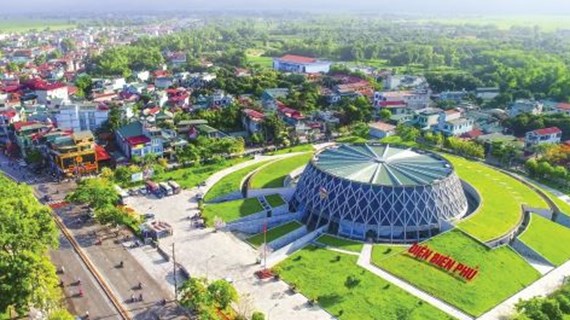Traditional craft of salted ba khia making recognised as national intangible cultural heritage
 Ba khia ((three-striped crab) live in mangrove forests (Source: camau.gov.vn)
Ba khia ((three-striped crab) live in mangrove forests (Source: camau.gov.vn)
Hanoi (VNA) – The Department of Culture, Sports and Tourism of southern Ca Mau province has held a ceremony announcing the traditional craft of making salted and fermented ba khia (three-striped crab) of its Ngoc Hien district, as the National Intangible Cultural Heritage.
The wetland-dwelling ba khia (three-striped crab) is most popular in the southern coastal provinces of Bac Lieu and Ca Mau where locals consider the creature a familiar delicacy. Particularly, ba khia in Ngoc Hien district’s Rach Goc town is considered the best in the region. The traditional craft of making salted and fermented ba khia was recognised as the national intangible cultural heritage in late 2019.
The traditional craft of making salted and fermented ba khia has reflected part of an effort conquering the nature of generations of locals in the southern land.
For generations, the crab has been preserved and eaten year-round as a salty addition to most meals. These days, however, urban cooks are coming up with new and interesting takes on the once-simple delicacy.
Ba khia is easily identified by its pincers and eight "furry" legs. Its underbellies are typically ruddy and their flavourful insides are either orange or grey.
Ba khia is typically found in brackish coastal mangrove forests. The striped crustaceans typically hide out in these forests all day but come out to feed at night.
Ba khia is a species of crab, concentrated extensively in the mangrove forests in Ca Mau province. Its breeding season falls in the tenth month of the lunar calendar. The mass catching of the crabs stimulated the locals to come up with a way to preserve them with salt to make the food.
The best moment to hunt for ba khia is during low tide when the crabs come out of their holes to hunt for food.
The meat of ba khia is firm, sweet and aromatic because they eat the fruits of the mangrove forest.
 Visitors join with local farmers to catch ba khia in the evening (Photo: VNA)
Visitors join with local farmers to catch ba khia in the evening (Photo: VNA)
The salted and fermented ba khia making is practised mainly in Nam Can, Dam Doi or Phu Tan districts, but the most famous brand comes from Rach Goc town in Ngoc Hien district.
It has been practised by generations of locals and modified in different areas, but its unique traditional flavour, which is famed nationwide, has still been retained. Over time the food has become an indispensable specialty of the southernmost land.
The People's Committee of Ca Mau has a plan to protect and promote the values of local intangible cultural heritage by 2020, with an orientation to 2030. To carry out the plan, the province plans to spend about 3.7 billion VND, including 2.5 billion VND coming from the provincial budget, 550 million VND from the district budget, and the remainder from contributions of local communities and other sources.
Tran Hieu Hung, Director of the provincial Department of Culture, Sports and Tourism, said that Ca Mau currently has about 400 households with more than 1,200 labourers directly involved in the production of salted and fermented ba khia, mainly in coastal districts such as Nam Can and Ngoc Hien.
Under the province’s planning, in the coming years, there will be 1,000 households involved in production of salted ba khia, attracting thousands of local labourers, and supplying about 10 tonnes of products to the market. The local authorities have directed the setting up of production co-operative group, towards the establishment of salted ba khia production co-operatives.
The department will coordinate with the People’s Committee of Ngoc Hien to promote the craft, thus forming the local traditional craft village./.













